"10 Mind-Blowing Tricks Used During War"
As anyone who as ever experienced it can tell you, war is a nasty business. And whoever tells you otherwise either hasn’t experienced it firsthand or profits from war in one way or the other. In any case, the tides of war are almost never certain and things can turn around at a moment’s notice. With this in mind, we’ll be taking a look at some of the most ingenious and mind-blowing tricks used during war.
10: The Dutch Floating Island
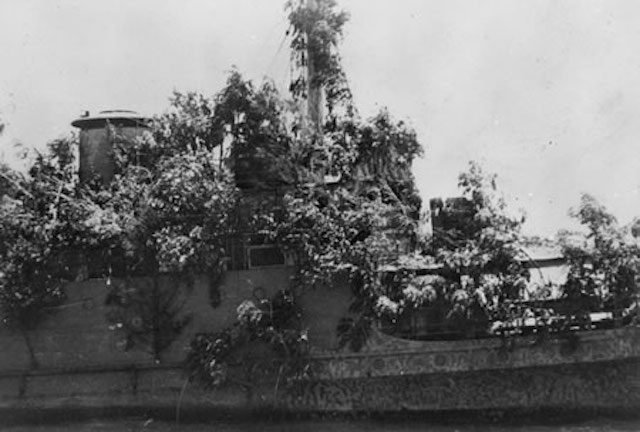
On February 27, 1942, a mixed force of American, British, Dutch, and Australian navy suffered a crushing defeat at the hands of the Japanese in what later became known as the Battle of the Java Sea. In the aftermath, the Dutch lost complete control over the East Indies and over the following days, Japanese bombers scoured the seas in search for the retreating Allied forces. One of those stranded ships was the Dutch HNLMS Abraham Crijnssen, a poorly defended and slow moving minesweeper. The only chance for survival was to reach Australia. But because of the Japanese superiority and unrelenting air surveillance, this was next to impossible. The solution was amazing and ingenious, to say the least.
The 45-man crew anchored the ship near one of the many islands in Indonesia and then went on land, cutting down as many trees as they could fit on the small minesweeper. They then arranged them to look like a densely packed piece of jungle. What couldn’t be hidden away by the canopy was painted to look like cliffs. But as you can imagine, this was not enough to hide from the Japanese planes flying overhead, especially if the HNLMS Crijnssen was moving in the middle of the sea. So, they stayed put close to the shore and waited for nightfall to come. Once under the cover of darkness, they would leave for another island close by, inching their way closer and closer to Australia with each passing day. The whole ordeal lasted for eight days, after which the Dutch minesweeper managed to reach Australia and reunite with the other Allied forces there.
9: The Fake Trees of WWI
Of all the wars that have ever gripped the planet and pitted people against each other, none were more horrendous than WWI. With new technologies like tanks, barbed wire, advanced artillery, and chemical weapons, the endless battlefield lines became hell on Earth for all those involved. A horrible war of attrition, where there were countless miles of trenches and barbed wire, with an extensive No Man’s Land between the two opposing trench systems. And in some cases, this No Man’s Land was so wide that it was impossible for one side to see what the enemy was doing. So, in order to get a better vantage point, the French were the first to make use of what little else remained on the battlefield and which was inconspicuous enough not to draw that much attention: exploded tree stumps.
They would pick one relatively close to the enemy lines and then they would carry out an extensive operation of photographing, measuring, and sketching it. All of this was done in secret and from a distance, mind you. Then, all of this data was taken to a workshop in order to fabricate a perfect replica. It would have had the same exact dimensions, splinters, and imperfections, almost down to the tiniest detail. These faux trees were, of course, made out of metal and hollow inside, with a tiny ladder that would extend almost to the top. There was also a small retractable chair, and a few cleverly concealed holes through which a soldier could spy on the enemy’s movements. The hardest part, obviously, was to replace it with the real one.
So, under the cover of darkness and extensive machine gun and artillery fire, as well as other diversions, a team of engineers would take the fake tree to the location in No Man’s Land, uproot the original one, and then plant the new observation post/”tree” in its stead. If all went well and the enemy was none the wiser about the exchange, then a soldier, usually one of a smaller stature, would sneak to it at night and go inside through a tiny hole at its base. Once in there, he would survey the enemy and then bring the information back to HQ the following night. But as you can imagine, it wasn’t a comfortable position, to say the least. Both sides used these surveillance trees during the war.
8: The Romans Were Once Afraid of Trees

While on the subject of trees cleverly used during war, we’ll take a look back at the ancient times. More precisely, in 88 AD in an engagement between the Romans and the Dacians in what is now southwest Romania. One year prior, the Roman Emperor Domitian ordered his general Cornelius Fuscus to attack the Dacians with five of his legions. But fate would have it that on their way to Sarmizegetusa, the kingdom’s capital located high up in the mountains, the Roman Legions were ambushed by the Dacians under King Decebalus. Here, in the narrow pass of Tapae, the legions were decimated, general Fuscus was killed, and the Dacians took the Roman equipment as spoils of war. In the summer of 88 AD, Domitian sent another force led by general Tettius Julianus on the same route as last time in an attempt to take the capital city and subdue the Dacians once and for all. This time, however, the Romans were victorious and the Dacian forces were decimated, even though the Romans themselves suffered heavy losses.
What happened next is related by Cassius Dio, a Roman historian. Fearing that the Romans would reach and conquer Sarmizegetusa, King Decebalus (pictured above) ordered a patch of forest to be cut down ahead of the advancing Romans, and then dress the human-sized trunks in armor. Seeing this from afar, Tettius Julianus now with his own forces severely weakened and believing that Decebalus received reinforcements, decided to withdraw. In a fortunate turn of events for the Dacians, a pretender to the Roman throne rebelled against Domitian at this time, and so did some Germanic tribes. These led the Emperor to conclude a truce with Decebalus by offering the Dacians an annual subsidy, as well as some Roman construction engineers, in exchange for Dacia becoming a vassal state. Some historians even go as far as saying that this unfavorable deal for Rome ultimately led to Domitian’s assassination in 92 AD.
7: Bluffing for Belgrade
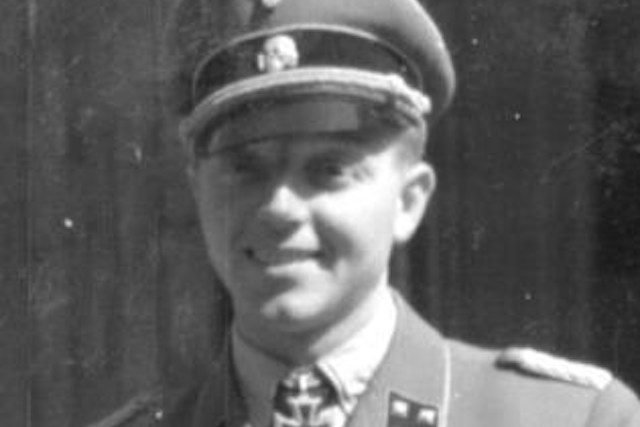
Bluffing is a skill usually used in games of poker, but as it turns out, you can conquer entire cities with it. This was the case of Fritz Klingenberg, a German captain during WWII, who was described by his superiors as being “intelligent yet headstrong, loyal yet not above correcting his superiors, brilliant under pressure, yet arrogant to the point of insubordination.” During the early years of the war, when Germany was in full expansion mode, Klingenberg was leading a motorcycle reconnaissance unit tasked with gathering information ahead of the army. Upon nearing the Yugoslavian capital of Belgrade, the 26-year-old captain decided to cross the Danube River with six of his men and survey it more closely. The city went through a four-day period of Nazi aerial bombardment and most of the Serbian officials had fled by that time. They hijacked several vehicles, rescued a drunken German tourist who was set to be executed, and entered Belgrade without facing any real opposition.
He then replaced the Yugoslavian flag with the Nazi colors on several of the buildings and ordered his men to patrol the city in their vehicles, thus giving the impression that Belgrade was now in German hands. When confronted by the mayor and several other officials that remained behind, Klingenberg told them that he was in charge of the point team leading several SS tank divisions and that Belgrade was now under Nazi control. He also told the mayor that he needed to get in contact with his unit via radio, otherwise the German Air Force would continue to bombard the city, quickly followed by a strong ground artillery attack.
Not sure what to make of it, the mayor was pondering Klingenberg’s words with a dose of skepticism. But as he was doing so, a group of German reconnaissance planes flew above and the captain then pointed up while tapping his wrist, reminding the mayor that time was running out. The mayor then immediately relented and began preparations for surrender. Even the Nazi forces receiving Klingenberg’s radio transmission didn’t believe him at first, thinking that he was somehow captured, tortured, and forced to lure the German army into an ambush. He nevertheless was able to capture 1,300 Serbian troops and 200,000 civilians with only a handful of men, a quick wit, and without firing a single shot.
6: Zhuge Liang – The Original Sleeping Dragon
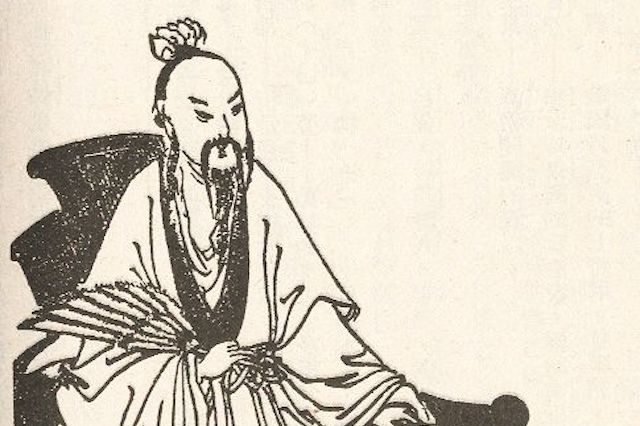
A somewhat similar story took place in 3rd century China, but in reverse, where an overwhelming force was driven away by a single man with a lute. But this was no ordinary man; it was none other than the great general Zhuge “Sleeping Dragon” Liang. In what was one of the few mistakes of his entire career, Zhuge (Chuko) Liang found himself at one time stranded from the bulk of his forces, with well over 100,000 enemy soldiers bearing down on him and with no chance of retreat. Any other general might have accepted defeat and surrendered, or at the worst, commit suicide in order to avoid embarrassment, but not Chuko Liang. Hearing about the large army headed towards them, Liang ordered the roughly 100 men under his command at the time to open the gates of the town they were located, and then told them to hide.
He then changed into simple Taoist robes, climbed onto the most visible part of the wall, and waited. When the huge army arrived, led by Sima Yi, a longtime enemy of Liang’s, he immediately knew something was wrong. Knowing full well what the Sleeping Dragon was capable of, Sima Yi suspected a trap. The fact that Liang was burning incense and playing his lute while the overwhelming army was just beneath his feet didn’t help in the decision making on Sima Yi’s part. He concluded that Chuko Liang had laid an elaborate trap for them and ordered a swift retreat. In today’s China, the Sleeping Dragon is regarded among the most popular statesmen and skilled military commanders in the country’s history.
5: That Time the Soviets Tricked the Nazis Into Supplying Them on a Regular Basis
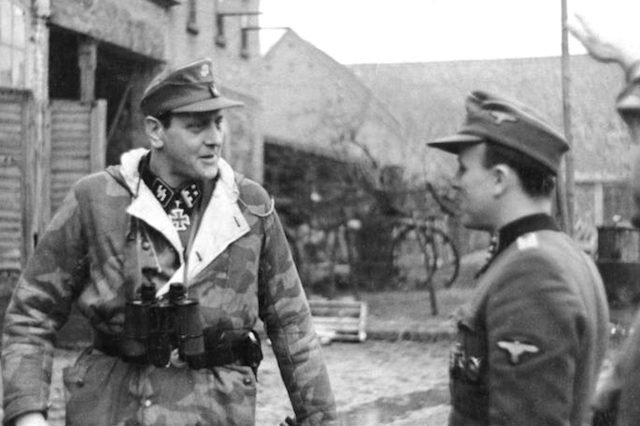
What came to be known as Operation Scherhorn was actually a clever ploy on the Soviets’ part by convincing the Nazi high command in Berlin to send in regular supplies for almost a year between August 1944 and May 1945. The operation was proposed by none other than Stalin himself, and implemented by the People’s Commissariat for Internal Affairs – the NKVD. The Soviets somehow managed to convince the Nazis that a force of 2,500 German soldiers was trapped behind enemy lines in what is now present-day Belarus. With the help of a German Lieutenant-Colonel, Heinrich Scherhorn, who was a prisoner of war and coerced into taking part in the ruse, the Soviets put their plans into action.
Scherhorn made contact with Berlin, told them of the situation and location, and requested assistance. Though initially believing it to be a trap, the Nazis eventually agreed and sent in a small group of commandos to rescue them. But as fate would have it, they were captured. Several other attempts were made, but every time, Russian forces appeared as if out of nowhere and stopped the rescue operation. The German high command then decided against any further rescue attempts and instead opted in airdropping supplies at regular intervals. Otto Skorzeny, pictured above, was in charge of keeping Scherhorn supplied.
What’s really interesting here is the fact that even when the Nazis were at the end of their rope, with the Allied forces attacking them on all fronts, they still continued sending in supplies to Scherhorn and his men. Not only that, but for his valor and resilience in the face of adversity, Scherhorn was regarded as a national hero and even awarded the Knight’s Cross of the Iron Cross, the highest award in the German military during WWII.
4: Animals and WWI
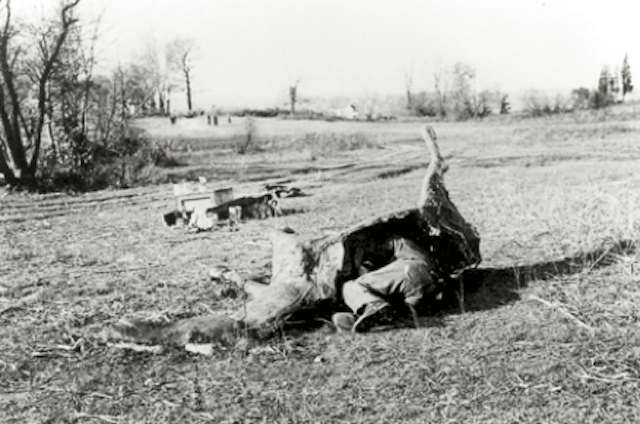
As we mentioned in a previous entry, WWI was the most horrible conflict in the world had ever seen. It was the first major conflict to bring a lot of innovation onto the battlefield, and with it, improvisation was a must. So, besides those fake trees used as vantage spots in No Man’s Land that we talked about before, in order to spy on the enemy, there were also cases of papier-mâché horse carcasses that blended in perfectly among the other countless dead horses scattered everywhere. From inside these hollowed out fake horses, soldiers could spy on the enemy and report their movements back to base. Also, if there was the case of an artillery bombardment, or something similar, they would use the confusion and chaos to also snipe at the enemy. On the African front, however, there were cases of ponies painted as zebras so as to not draw the attention of the enemy and raise their suspicion.
When it came to sea warfare, soldiers really became inventive. For starters, they thought that by training sea lions to associate any submarines with feeding time, they would start flocking around every time one was near and thus reveal its presence. This technique didn’t prove too useful because, as it turns out, it’s quite hard to keep track of all the sea lions swimming freely off the coast of Great Britain. The idea even went as far as painting the sea lions with glow in the dark paint, so that submarines can be spotted even at night. Cool idea… but it didn’t really work. And neither did the technique of training seagulls to poop on enemy submarine periscopes. Yes, this one is real, too.
3: The Mysterious Q-Ships of WWI
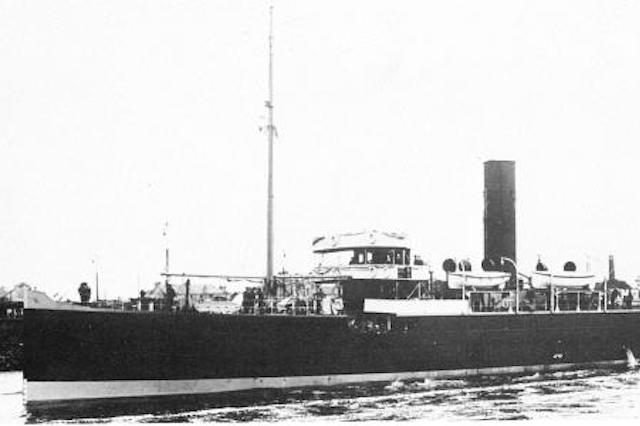
Sea warfare during WWI was also changed beyond recognition, especially with the introduction of the submarine. The German U-boats were notorious and became a serious threat, especially for the Allied merchant fleet carrying supplies from America, Canada, or the British Empire to the United Kingdom. So, in order to counteract this hidden threat, the British came up with the Q-Ships, or Decoy Vessels. These ships were usually smaller in size, and with good reason. German submarines usually relied on surface gunfire to destroy these smaller vessels, preferring to preserve their torpedoes for larger or military ships. While underwater, U-boats were almost undefeatable, but on the surface, they suddenly became more vulnerable. This is why the British believed that with enough concealed armament on a Q-ship, the battle could turn to their favor.
But in order for this ruse to work, the sailors and the ships themselves needed to play the part of actual merchant ships. They adopted quite elaborate disguises for both the vessels and the crew and the ships changed their names almost every time they went out to sea. Some of the sailors would even cross-dress and put on “plays” for the spying German submarines, acting as if they were on a cruise or something. And when the U-boats would surface, half of the crew would act as if they were panicking and getting on life rafts, while the other half was hiding and secretly manning the concealed weaponry. Once the U-boats were in range, they would begin firing and sometimes even destroy them. This technique proved quite successful, at least in its early days. But after a while, the Germans realized what was happening and changed their strategy.
2: Operation Spring of Youth

In the aftermath of the Munich Massacre in 1972, where 11 Israeli Olympic athletes were taken hostage and then later killed by a Palestinian terrorist group known as Black September, the IDF (Israel Defense Forces) organized a counterattack one year later where three high ranking Palestine Liberation Organization (PLO) leaders were to be executed. The operation was known as Spring of Youth. The targets were located in Beirut and Lebanon, and to get there, the commandos were sent via powerboats to the coast. From there, Mossad took them to the location where the targets were living.
But in order to get close to the apartment buildings, the Israeli commandos needed to draw little to no attention from the local police and PLO soldiers around. So, in order to get close, half of the Israeli commandos dressed up as women and walked hand in hand with their male counterparts, posing as lovers. The scheme worked and they managed to get past the guards and were successful in eliminating their targets. In charge of the operation, and one of the commandos dressed as a woman was Ehud Barak – Israel’s former Prime Minister, as well as Minister of Defense. And we know what you’re thinking: no, Steven Spielberg’s film Munich is not based on this operation. It is, however, referenced in the film, as is Barak.
1: Opium-Laced Cigarettes

In 1917, during the Sinai and Palestine Campaign of World War I, the British were fighting the Ottoman Empire over the region and the conquest of Jerusalem. Over the course of several months, as the Ottomans were being constantly bombarded, they began to become isolated and their supplies ran short. The British were dropping packs of cigarettes alongside propaganda materials as a means of deterring the Turks from fighting. It didn’t work, but the Turks did get accustomed at looking for these cigarettes on the battlefield.
So, before the British led the attack on the town of Beersheba, they sent in another airdrop of cigarettes to the Ottomans, but this time these cigarettes were laced with high quantities of opium. These cigarettes rendered the Turkish forces immobile and the battle was won by the British.